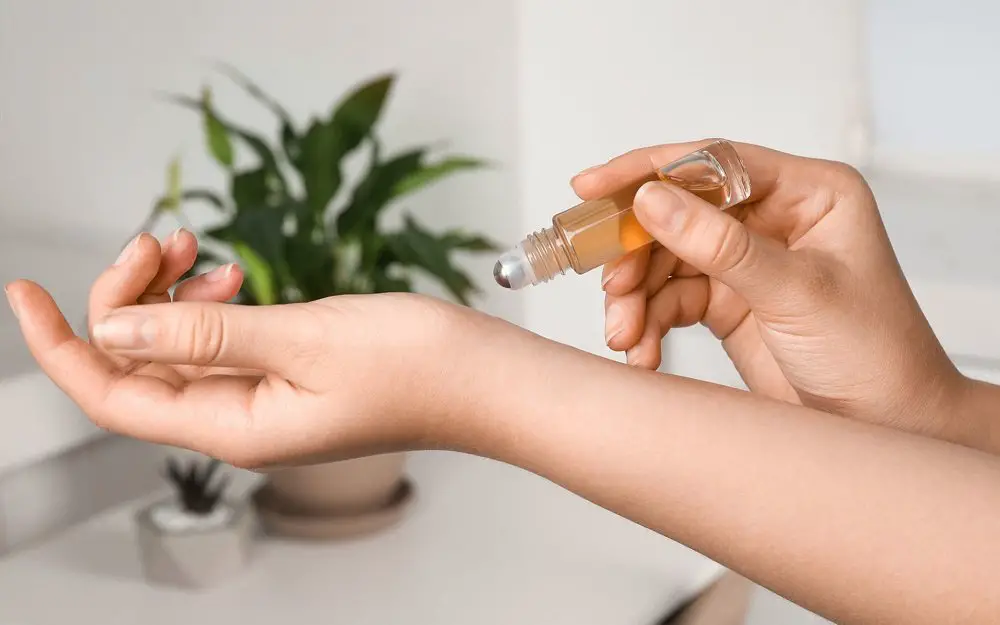Applying essential oils to the skin can be fantastic or incredibly risky. It all depends on how often you reapply and what oils you use. For example, some oils like tea tree should never touch broken skin. Moreover, children and pets are especially sensitive to essential oils, and you must practice extra caution around them. Because these wonderfully fragrant plant extracts are often more powerful than we know, you need to make sure you don’t overdo it, or you could end up quite sick. Fortunately, you don’t need to play guessing games. There are many useful resources available, and I’ll help walk you through some of the common problems and warnings about topical essential oil application. Safe use is vital.
How often can I apply essential oils? You can apply diluted essential oils several times a day. However, you need to use the right concentrations, or you could end up causing a problem rather than solving one. Unfortunately, the strength of various oils depends on the extraction method and potency of the plants they come from. Thus you should always use high-quality essential oils from a trusted source.
Dilute Essential Oils For Safe Application
Although some essential oils are mild and relatively harmless, you should always use a carrier oil when applying essential oil. Unless you’re an expert, or you consult one directly, minimal topical essential oil application is best. A few drops inside a massage oil is very different from a few drops on the skin.
Oils like peppermint and cinnamon should never go on bare skin. These are both great examples of the power of plants. A little bit is enough to cause a chemical burn.
While we all love the smell of essential oils, consider wearing a diffuser necklace, or purchasing a pre-mixed professional blend until you know more about the specific oils you’re using. Additionally, carrier oils exist to help you achieve the benefits of essential oil with lower risks.
Essential Oil Application Safety Basics
The first thing you should always do is read the label on your essential oil. The ingredient list should be one or two items. If your oil is in a carrier, then it will list this first as there’s more of it in the bottle. Argan, grapeseed, and sweet almond are all incredibly common examples.
In an un-diluted oil or a blend, the actual oil should always be listed. It shouldn’t say ‘scent’ or ‘parfum’ or any other similar notation. These are indications that your oil isn’t pure. More importantly, ‘scents,’ and perfumes or ‘parfum’ are not essential oils at all, but rather synthetic, chemical lab creations.
Choose a high-quality collection like VSADEY Essential Oils Set from Amazon. The hundred-percent pure oils are perfect for skincare, diffusers, and other household uses. Moreover, with twenty options from clary sage to sandalwood and frankincense, you’ll find plenty of aromatic and therapeutic choices. See the excellent reviews when you click here.
Consult a doctor before using any essential oil for medical and health reasons. Unfortunately, not all doctors are familiar with essential oil use. You may need to speak to a licensed naturopath rather than a primary care physician or an ear, nose, and throat doctor.
Simply put, they are different and very complex fields. Hence you should not expect all PhDs to have the same information. Doctors are highly trained specialists who spend years learning about their chosen profession, but they are not omniscient.
How to Tell if Essential Oil is Toxic
Applying essential oils is a matter of the concentration, strength, and uses of that particular oil. Anything, even water can be toxic if you get too much. You wouldn’t use a body scrub five or ten times a day, and most other essential oil products are similar.
Likewise, some oils can only be applied in certain areas. Lemongrass, for example, should probably not go on your face, or near your private areas. You risk damaging soft tissues if you apply it near or on them. However, Lemongrass oil is excellent in a massage oil or on the arms and legs.
“The rule of thumb in toxicology is ‘the dose makes the poison,’ so all essential oils are potentially harmful.” -Dr. Justin Loden, Vanderbilt University Medical Center’s Tennessee Poison Center.
Essential Oils Absorb Into Your Body
It takes less than twenty minutes to detect essential oils in the blood. However, the research into essential oil absorption is minimal. The exact science is complicated because the biology of humans and the composition of each oil varies.
How much oil you put on and other vital statistics will affect how fast your body internalizes parts of your essential oil. In general, you should always shoot for a minimum application to achieve your goal. Use the same care with diffusers and airborne essential oils as well.
Keep in mind, a few drops of oil in a bath will absorb the same as if you put them on your skin. You are putting them on your skin. Placing essential oil in food or water is still applying it to your body.
If you plan to work with essential oils, invest in a box of gloves. Preventing the oils from soaking into your body thoughtlessly is a sage decision. Though blending your own essential oil products is rewarding, it can also be unexpectedly hazardous.
Doing a Skin Test
You’ve probably seen the warnings on boxes of hair dye or similar products that recommend doing a patch test before using the color all over your head. Think of essential oils the same as using a new hair dye. You can skip the patch test, but the results could be unpredictable and might cause a severe problem that you could easily prevent.
To perform a patch test, you only need essential oil and your skin. Choose an area that won’t show if you have an adverse reaction. A leg is often a wise choice.
Next, you need to put a drop of oil on your skin. That’s it. Leave it alone and wait for twenty minutes. If the spot itches or burns, wash it off immediately with a mild soap. Doing this will tell you if you have a serious and immediate reaction.
Additionally, you need to wait twenty-four hours before reapplying any new essential oil. Waiting a day will give the oil time to work fully and leave your body. Those with compromised immune systems or sensitivities may want to talk to a doctor before even doing a patch test.
However, a patch test cannot prevent you from overusing an oil. Additionally, it will not necessarily indicate how you feel once the oil gets into your bloodstream. Still, it’s the right place to start with any new essential oil.
Start with a high-quality option like the Aromatherapy Essential Oils Set from Botanic Hearth. Using a USDA certified, therapeutic quality organic oil is better for use on delicate skin. Botanic Hearth is a well known and trusted brand, and this starter kit will help you find the right oils for your needs. Order from Amazon when you click here.
Applying Essential Oils to Kids & Pets
Adults can apply essential oils more often than children or pets. Infants are especially sensitive to almost everything. Although it varies a bit from one person to the next, your pediatrician will tell you that it’s necessary to use additional caution with the very young.
Similarly, pets have sensitivities that humans do not. Because their physiology is different from ours, animals may not be able to stand many of the oils we use regularly. It’s vital to talk to your vet before introducing any essential oils where pets are present. Even diffusers are dangerous to your furry friends.
Always do a patch test, particularly for children and pets. Children have thinner skin than adults. Hence they will often react faster or with a much smaller dose than an adult. Moreover, it’s wise to do a test even if you plan to use a diffuser. Inhalation isn’t the same as topical use, but it could still warn you that there’s a problem.
Lavender is one of the best choices for putting children to sleep. A bottle of Majestic Pure Lavender Oil will go a long way toward many restful nights. The therapeutic grade blend has an incredible scent. Moreover, it’s meant for external use so this bottle is ideal for skincare and bathtime. Find out more on Amazon when you click here.
Keep Essential Oils Out of Reach
More often than not, a child or animal is poisoned by essential oils from ingestion. In short, they eat it. Hence, you should only use topical oils on pets with a vets approval, and never where they can lick it off. Use a cone if necessary.
Children are smarter. You need to make sure very young children, and babies cannot reach the oil if you apply it topically. Scratching a spot and then licking a finger can cause your kids a world of problems.
When you store essential oils in the home, make sure your kids and pets cannot get to them. I recommend child safety latches for cabinets. Treat your essential oils just like you do household cleaning products and lock them up, so no one gets hurt.
Even if you trust your children and pets, it’s better not to take the risk. It only takes a moment for a horrible accident to occur. Plus, medical and veterinary invoices can get costly very fast. No one enjoys having their stomach pumped, and you won’t like the bills if you fail to put your essential oils out of reach.
Final Thoughts
It is safe to apply essential oils daily or multiple times a day. However, it depends on how much and what type you are using. Always check the label, use a carrier, and ask a professional for advice.
We often overlook plant-based product dangers because they are ‘natural.’ To put it in perspective, poison hemlock (not an essential oil) is also all-natural, which will not stop it from killing you. Fortunately, most essential oils are unlikely to be deadly for an adult human, but that doesn’t make them safe if you use them wrong.
Please practice caution when applying essential oils. Always use the minimum amount unless otherwise instructed by a doctor or medical professional.

